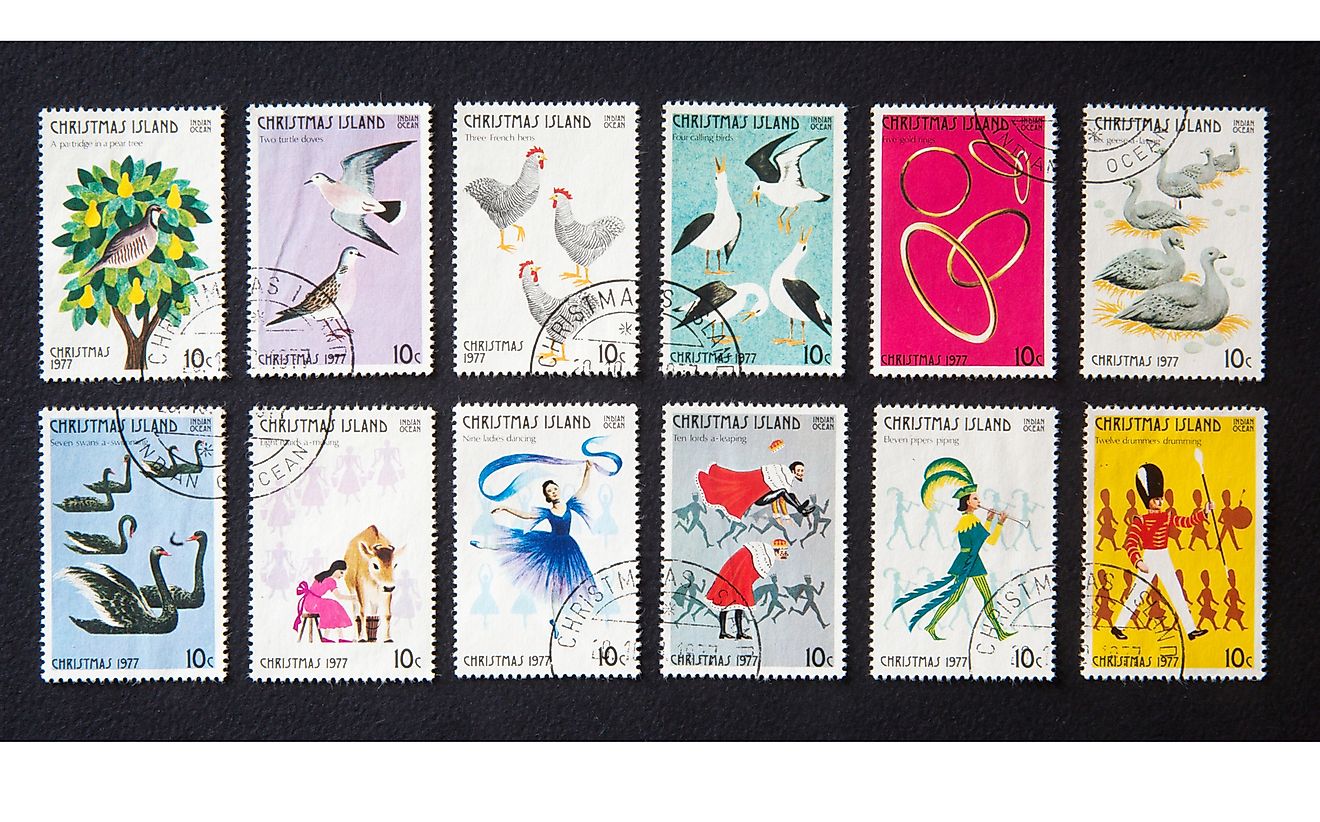The Meaning Behind the 12 Days of Christmas

Many of us are familiar with the carol “The Twelve Days of Christmas”. It plays all around during the holiday season, beginning immediately after U.S. Thanksgiving and continuing through Christmas and the days that follow. The song has its origins in 18th century England, when British children played it as a memory-and-forfeit game. The song would be sung and each new player had to add a new verse while also remembering all the prior ones. If someone couldn’t remember a verse, then they had to pay a “forfeit” of a candy or a kiss or some other sundry item.
Another theory for the carol is that it served as a catechism song, during the time that Catholicism was outlawed in England. There is no evidence that this is actually true, however like many similar theories for songs or customs (such as Ring a Ring o’ Rosie), the correspondence is very detailed.
Here are the supposed meanings behind each verse:
- A Partridge in a Pear Tree - Jesus Christ
- Two Turtle Doves - The Old and New Testament
- Three French Hens - The virtues of Faith, Hope, and Charity
- Four Calling Birds - The four gospels: Matthew, Mark, Luke, and John Five Golden Rings - The first five books of the Old Testament (The Tanach)
- Six Geese-a-Laying - The six days of creation before God’s rest on the seventh day
- Seven Swans-a-Swimming - The seven gifts of the Holy Spirit: wisdom, understanding, counsel, fortitude, knowledge, piety, and fear of the Lord
- Eight Maids-a-Milking - The eight Beatitudes
- Nine Ladies Dancing - The nine fruits of the Holy Spirit: love, joy, peace, patience, kindness, goodness, faithfulness, gentleness, and temperance.
- Ten Lords-a-Leaping - The Ten Commandments
- Eleven Pipers Piping - The Eleven Faithful Disciples (minus Judas, who betrayed Jesus)
- Twelve Drummers Drumming - The Twelve points of belief in the Apostles Creed
The Days Between Christmas and Epiphany
In fact, the Twelve Days of Christmas are the days that sit between Christmas Day on December 25th and Epiphany on January 6th. Christmas Day is the first of the twelve days of Christmas, and Epiphany Eve on January 5th is the twelfth day of Christmas. Like many Christian traditions around Christmas, the twelve days of Christmas originated from older traditions, such as the Norse or Germanic traditions around Yule and the twelve days of Yule. Each of the days between Christmas and Epiphany were supposed to correspond with the upcoming year. A person could watch for omens or signs to help them divine what the new year would bring. Each day spoke to a different month.
The Yule log would be lit on Christmas Eve, and then its fire would burn every night until January 6th, when it would be extinguished. A rich Twelfth Night cake, made of eggs, butter, raisins, fruit, nuts, and spices, would be eaten on the first night. Inside the cake was a dried pea or bean and the person who found it would be Lord or Lady of Misrule. This person led the celebrations. The closest thing to this cake today is Italian Panettone. On the Twelfth Night there was often caroling and partying that happened. During the parties that occurred, roles were reversed: the servants were served by the wealthy and the rich cared for their servants. Epiphany Eve culminated with folks leaving out images of the three wise men, or leaving out shoes or other containers that the wise men could leave gifts in.
As for the days themselves, each celebrates a different holy day within Christianity:
- December 25th is the celebration of Christmas, which honors the birth of Jesus.
- December 26th celebrates St. Stephen, who was the first martyr for Christianity. Additionally, the British celebrate Boxing Day on December 26th and they typically visit people who they did not see on Christmas Day. Its origin comes from the day after Christmas, when servants and tradesmen were allowed to return to their families, rather than wait on their masters (as they did on Christmas Day).
- December 27th is the feast day of St. John the Apostle, one of the more well-known of Jesus’ apostles.
- December 28th is “The Feast of the Holy Innocents”. On this day, the Catholic Church honors and remembers the infants that King Herod killed as his soldiers searched for the baby Jesus to kill.
- December 29th remembers St. Thomas Becket, who was the Archbishop of Canterbury and martyred on
- December 29, 1170 for disagreeing with the King over how much authority he had over the Church.
- December 30th is the feast day of St. Egwin of Worcester.
- December 31st, or New Year’s Eve, honors St. Sylvester, one of the earliest Popes. His holy day is celebrated in many central and European countries, where the day is seen as one of feasting and gifting. In Scotland, the night is known as Hogmanay.
- January 1st celebrates the solemnity of Mary as the Mother of God. This day specifically honors her motherhood.
- January 2nd is the feast day of St. Basil the Great and St. Gregory of Nazianzus.
- January 3rd honors the feast of the Holy Name of Jesus. This would have been the day that Jesus was named in the Jewish temple and given his official name.
- January 4th is the feast day of St. Elizabeth Ann Seton, the first American saint. A schoolteacher, she lived in the 18th and 19th centuries.
- January 5th is known as Epiphany Eve, the night before the wise men came to visit Jesus and brought their gifts of Frankincense, Gold, and Myrrh.
Whether you use the time to celebrate religious holidays or to watch for omens that speak to the year to come, the time between Christmas and Epiphany, the Twelve Days of Christmas, is a time that offers much for reflection and celebration.











